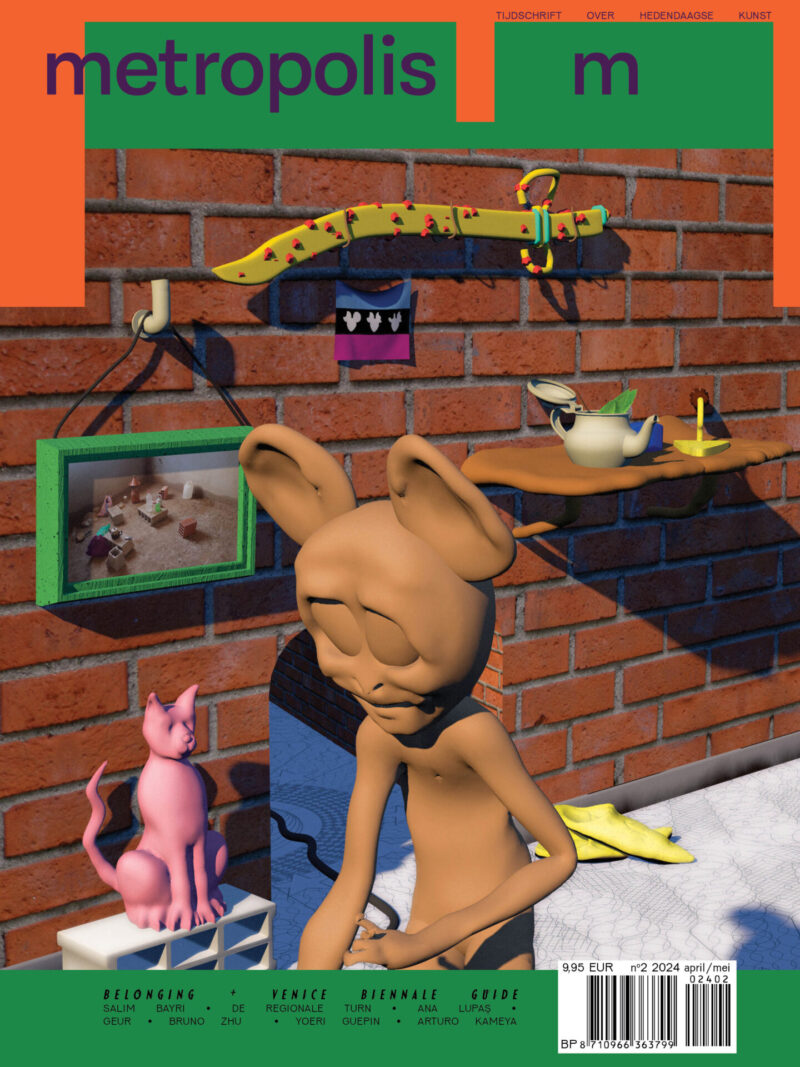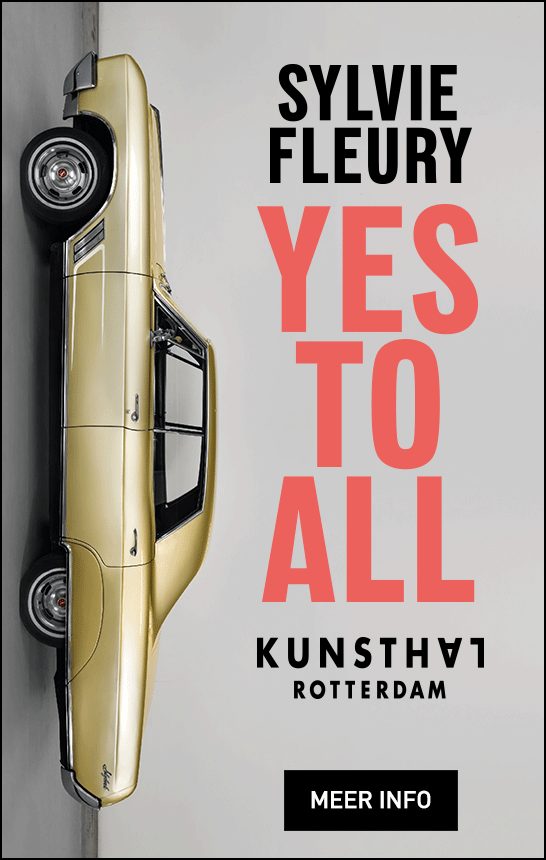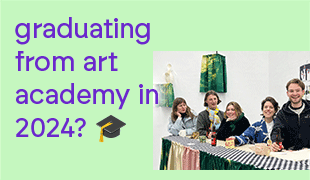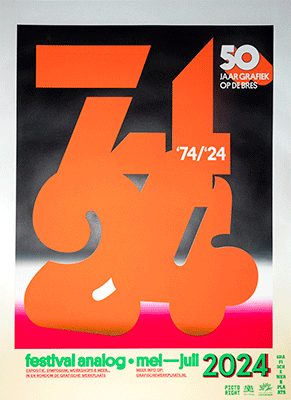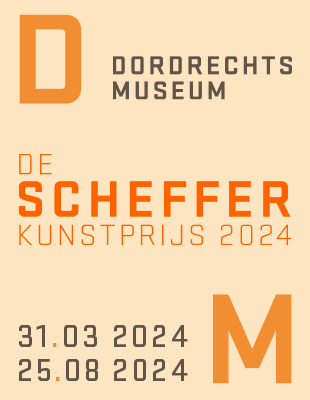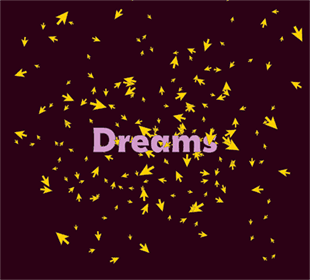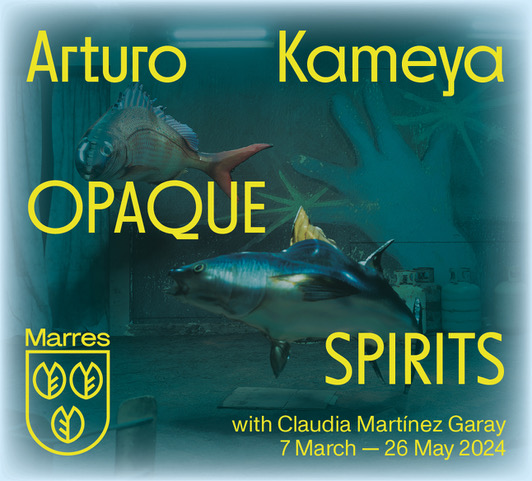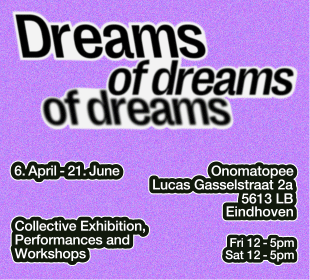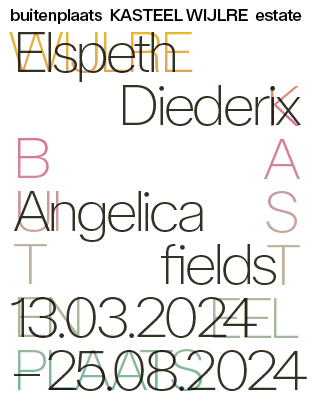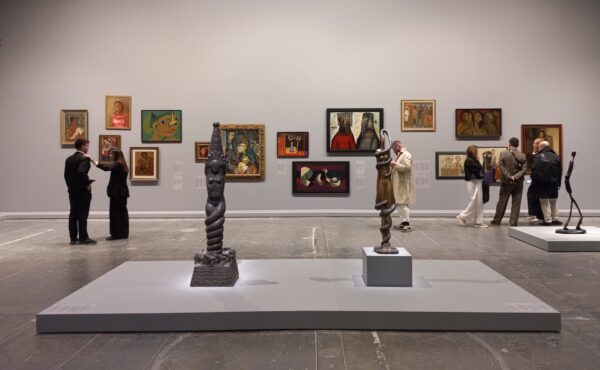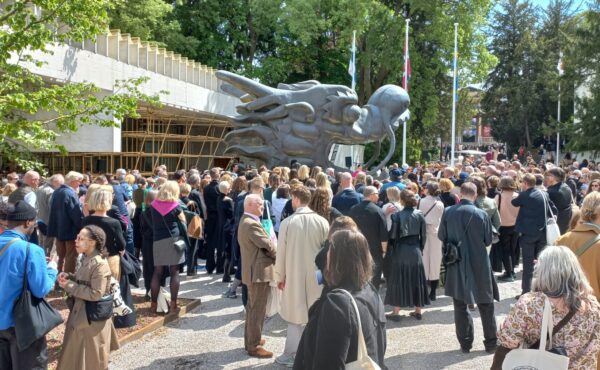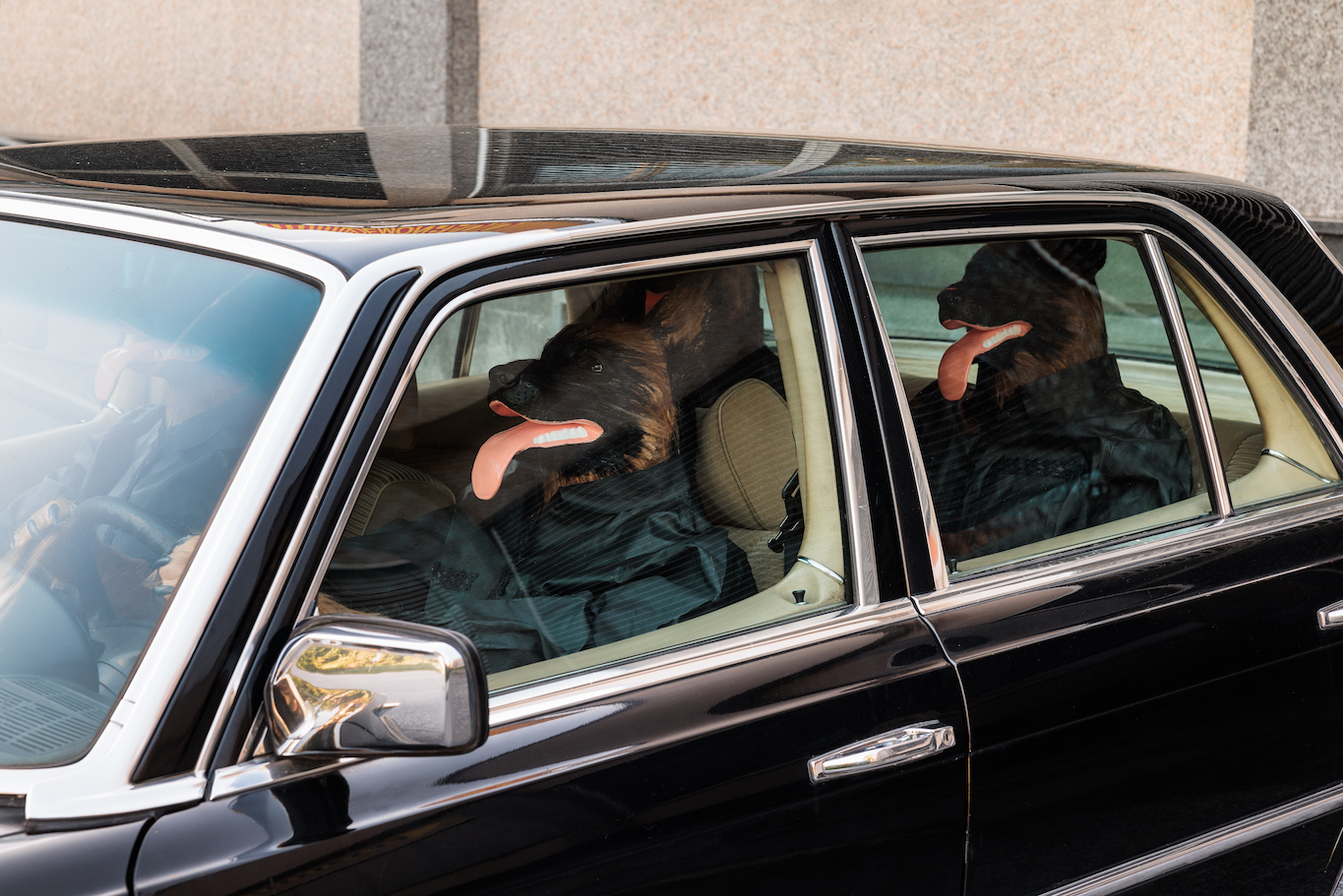
Jos de Gruyter & Harald Thys, Die Vier von der Tankstelle (The Four from the Filling Station, 2023), installation view, Demon Radio, photo: steirischer herbst / kunst-dokumentation.com, courtesy of the artists
The road to hell is paved with good intentions – steirischer herbst features Humans and Demons
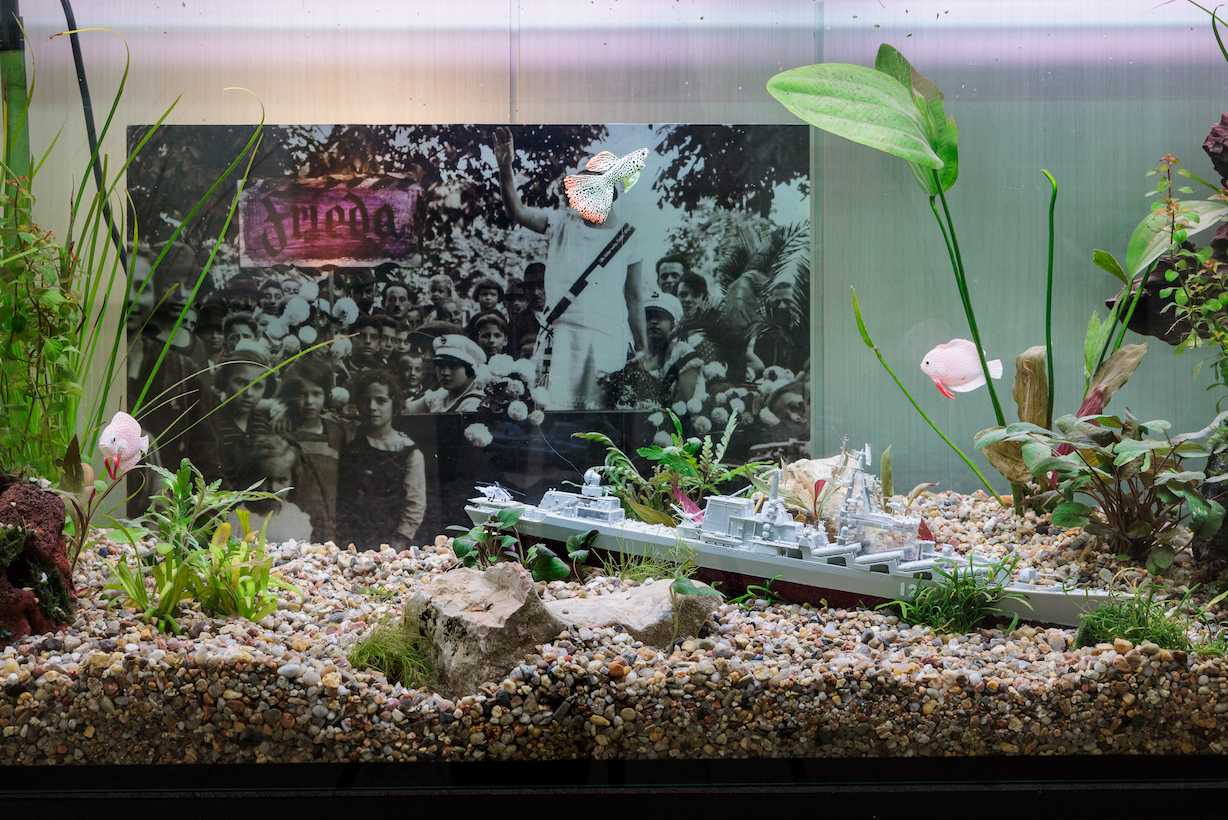
The Frieda Postcard, curatorial intervention, Submarine Frieda, photo: steirischer herbst / kunst-dokumentation.com
This year’s edition of steirischer herbst, entitled Humans and Demons, questions the ethical boundaries that make up good and evil in a world full of assumptions, addressing questions of survivor justice, political theater and artificial intelligence. Xenia Benivolski visits the festival in Graz and selects some of her highlights.
Founded in 1968, the steirischer herbst festival has revolutionary inquiry and a critique of modernism built into its DNA. The event was established as a celebration of the harvest season, in a region rich with food, wine and history. It has consistently been one of Europe’s most experimental, historiographic and politically forward art events. Much of this is owed to its particular position near the tri-national border of Austria, Italy and the former Yugoslavia. Like Kassel, Berlin, and Istanbul, Graz has often considered itself to be situated on the very edge of the West meeting the East, and therefore avant garde. This year’s festival, entitled Humans and Demons, questions the ethical boundaries that make up good and evil in a world full of assumptions, addressing questions of survivor justice, political theater and artificial intelligence.
Gries, the lowest point in Graz, has traditionally been occupied by lower classes and migrants because of its tendency to flood. Here, a photograph depicting a 1925 demonstration is displayed in an aquarium. The image depicts a group of workers carrying signage with the word Friede (peace), but later pacifists had altered the word Friede, to Frieda, the name of a woman, in fear of Nazi persecution. However, Frieda is a name derived from the German word for freedom, Freiheit. This intervention, entitled Submarine Frieda, questions the dynamic between the principles of Peace and Freedom, as peace for some often comes at the price of freedom for others. By doing so, it suggests that morality is a highly dynamic, self-perpetuating and polarizing field. Our subjective, ideological and intensely internalized world allows evil, in the words of Primo Levi, to ‘radiate outward…[sic] surrounding itself with accomplices won over by fear or seduction’.[1]
Gries, the lowest point in Graz, has traditionally been occupied by lower classes and migrants because of its tendency to flood. Here, a photograph depicting a 1925 demonstration is displayed in an aquarium
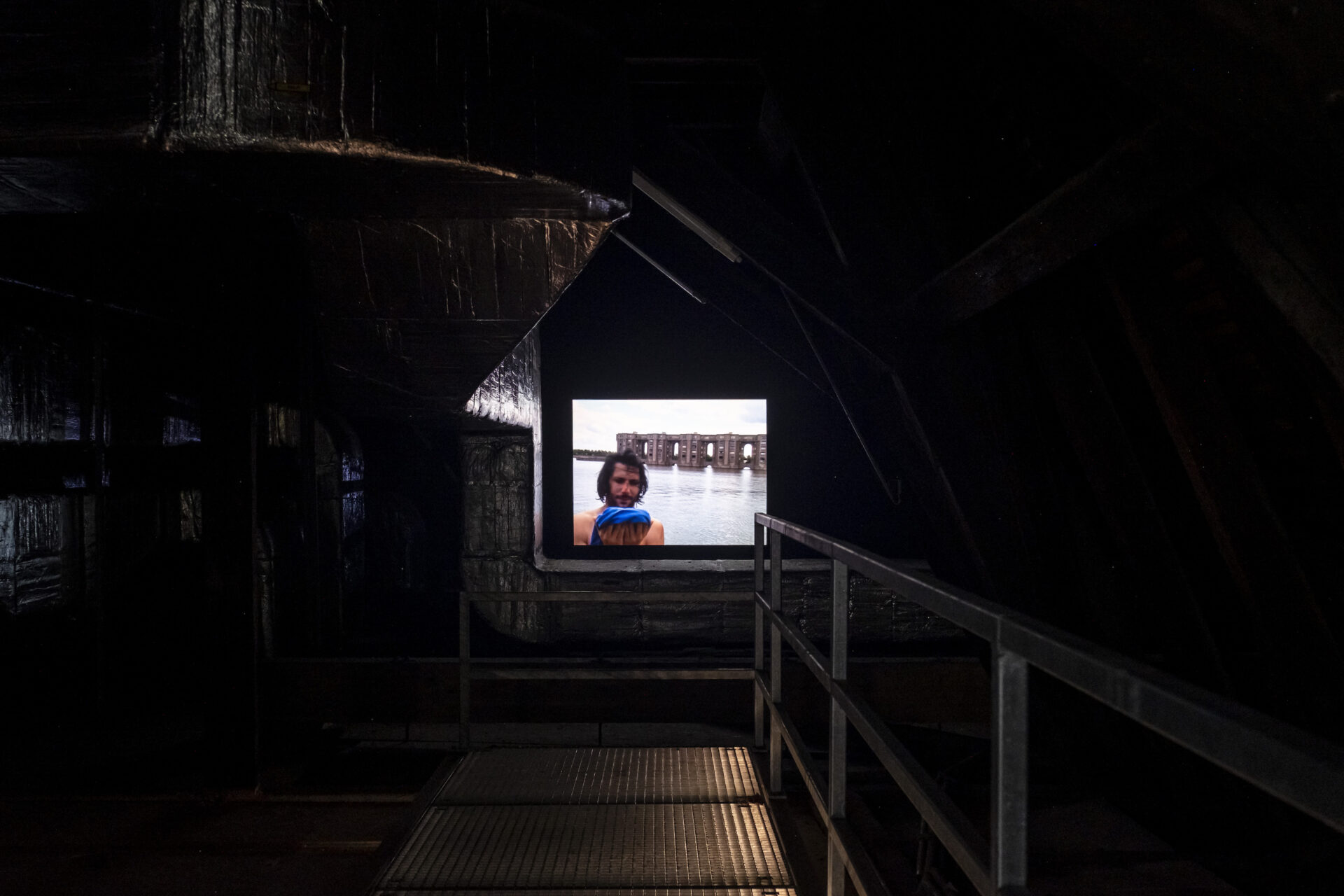
Cyprien Gaillard, The Lake Arches (2007–22), video, installation view, photo: steirischer herbst / Mathias Völzke, courtesy of the artist and Sprüth Magers
Yet evil is much more complex than that: the goals are merely keeping up with the means; for example, in the case of global colonization that took place in the name of Christian values, and now must be unraveled. Simultaneously, religious texts suggest that demons are entities that can be mastered and overcome. In the spirit of demonic possession, the festival engages four characters, fictional and real, who haunt the exhibition spaces: Dr. Jazz, pseudo-scientist Stefan Marinov, Brazilian abstract painter Mira Schendel and Freida. Together, the characters embody four exhibition spaces, each acting as a portal through which various vulnerabilities and networked ideas can be understood.
The Church of Ruined Modernity is an exhibition hosted in the Minoriten Monastery and Mariahilfer church by the Mur River, where Brazilian artist Mira Schendel (1919-1988) once displayed her work. A Catholic of Jewish origins, Schendel traveled to Graz at great risk to her person in 1944 to receive her Croatian passport. Inspired by her journey, the monastery conflates a critique of modernity with institutional efforts made to bring survivor justice to victims of Nazi oppression: Graz famously barely contains any modernist buildings, which can be understood as the denial of a painful chapter in its history.
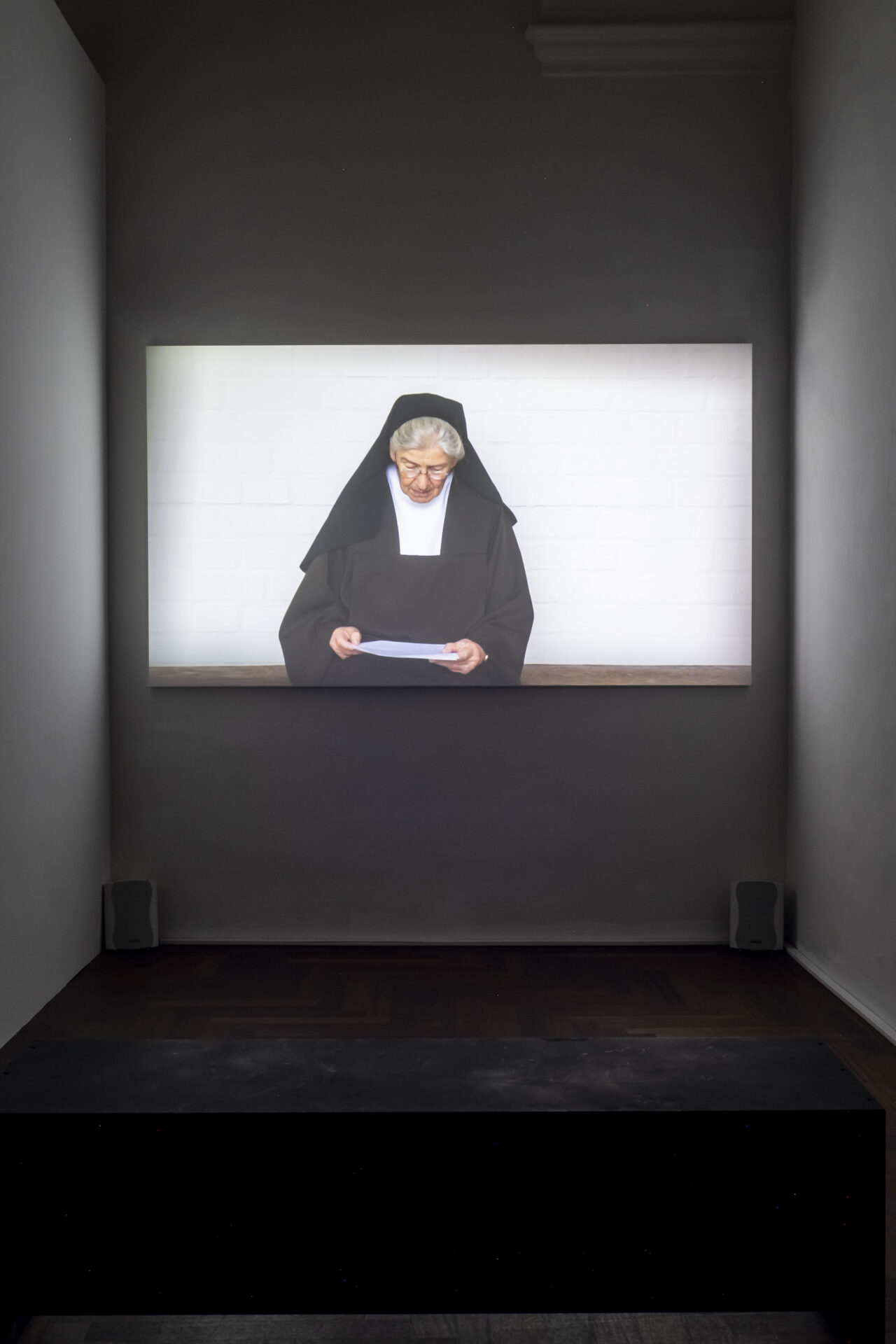
Andrea Büttner, Karmel Dachau (2019–23), video, installation view, photo: steirischer herbst / Mathias Völzke, © Andrea Büttner / Bildrecht, Vienna 2023
Nestled in the roof beams of the monastery, Cyprien Gaillard’s The Lake Arches (2007-22) is a short video loop depicting two young men who dive into a pool of water only to discover it is a shallow puddle. The shot pans out to reveal a postmodern apartment complex that looks like a dystopian film set. Likewise, choreographer Meg Stuart traces the boundaries of the nearly defunct postmodern Vorklink building. Andrea Büttner’s Karmel Dachau (2019) looks at the convent Heilig Blut, located next to the site of the former Dachau concentration camp, which the nuns can see from their windows, and in Flussschifffahrt (river cruise), a new work commissioned by the festival, Eteri Nozadze charts the course of her own encounter with Schendel in 1969, when the latter exhibited in the monastery. Nearby, a curatorial intervention has generated strangely accurate AI images of Schendel’s fateful trip to Graz.
The notion of artificial intelligence, both ambivalent and divisive, runs through the exhibition. Forum Stadtpark, housing the exhibition Villa Perpetuum Mobile fashioned into the residence of the pseudo-scientist and poet Stefan Marinov (1931-1997). Finding an audience in esoteric communities, Marinov took his own life when his experiments failed. The pavilion includes a careful curatorial intervention from his archive: including many rejection letters, correspondence on eclectic subjects such as UFOs, and recorded interviews. Marinov was particularly consumed by the invention of a device that could allow for perpetual motion. A number of semi-domestic installations imagine his immediate environment had the work been a success: The Believers, a 2019 installation by Pedro Gomez -Egaña is an intricately set table, dissected by pendulums that move, suspended from the ceiling, to and fro. Nearby, Michael Stevenson’s Strategic-Level Spiritual Warfare (2014-23) is a double doorway the swing of which is controlled by four AI bots, hosted in a remote location.
Andrea Büttner’s Karmel Dachau (2019) looks at the convent Heilig Blut, located next to the site of the former Dachau concentration camp, which the nuns can see from their windows
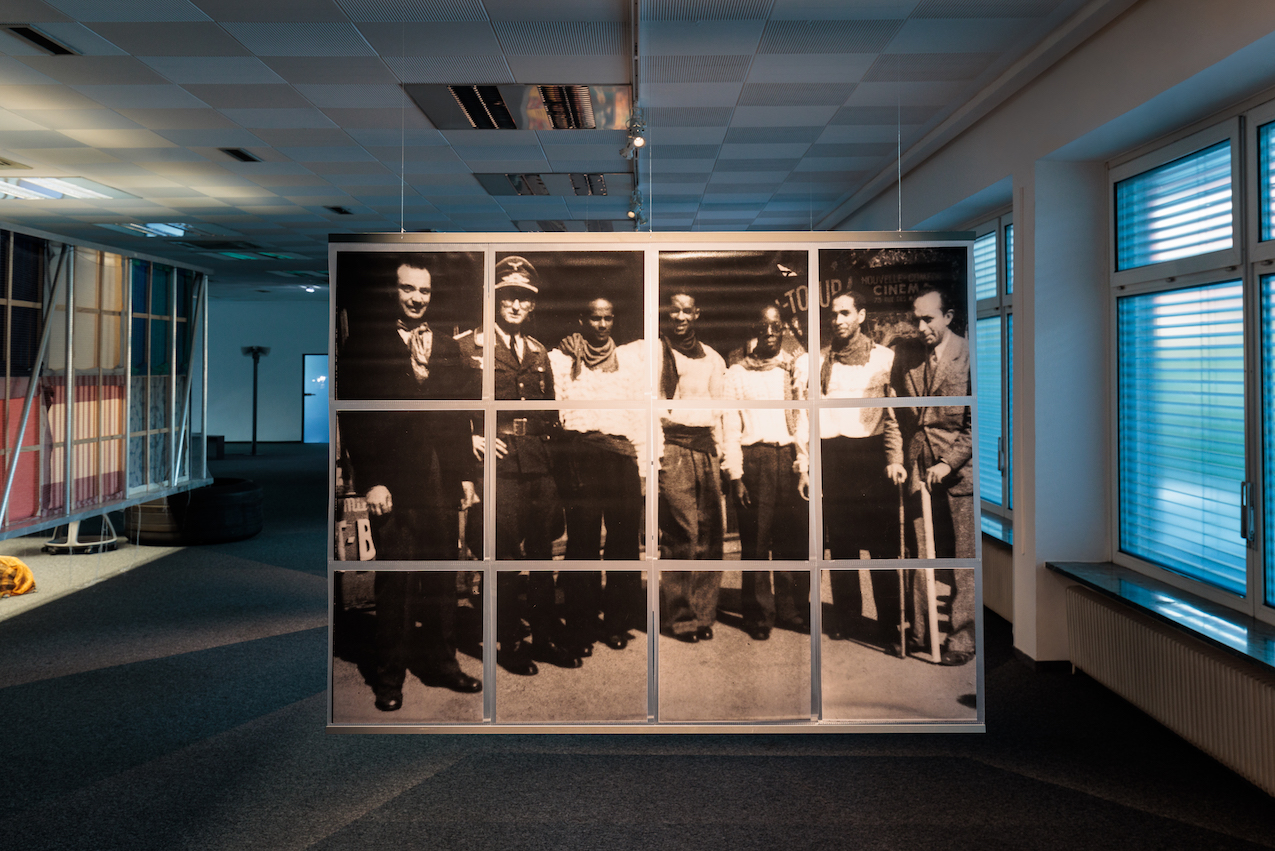
Dr. Jazzʼs Archive, curatorial intervention, Demon Radio, photo: steirischer herbst / kunst-dokumentation.com
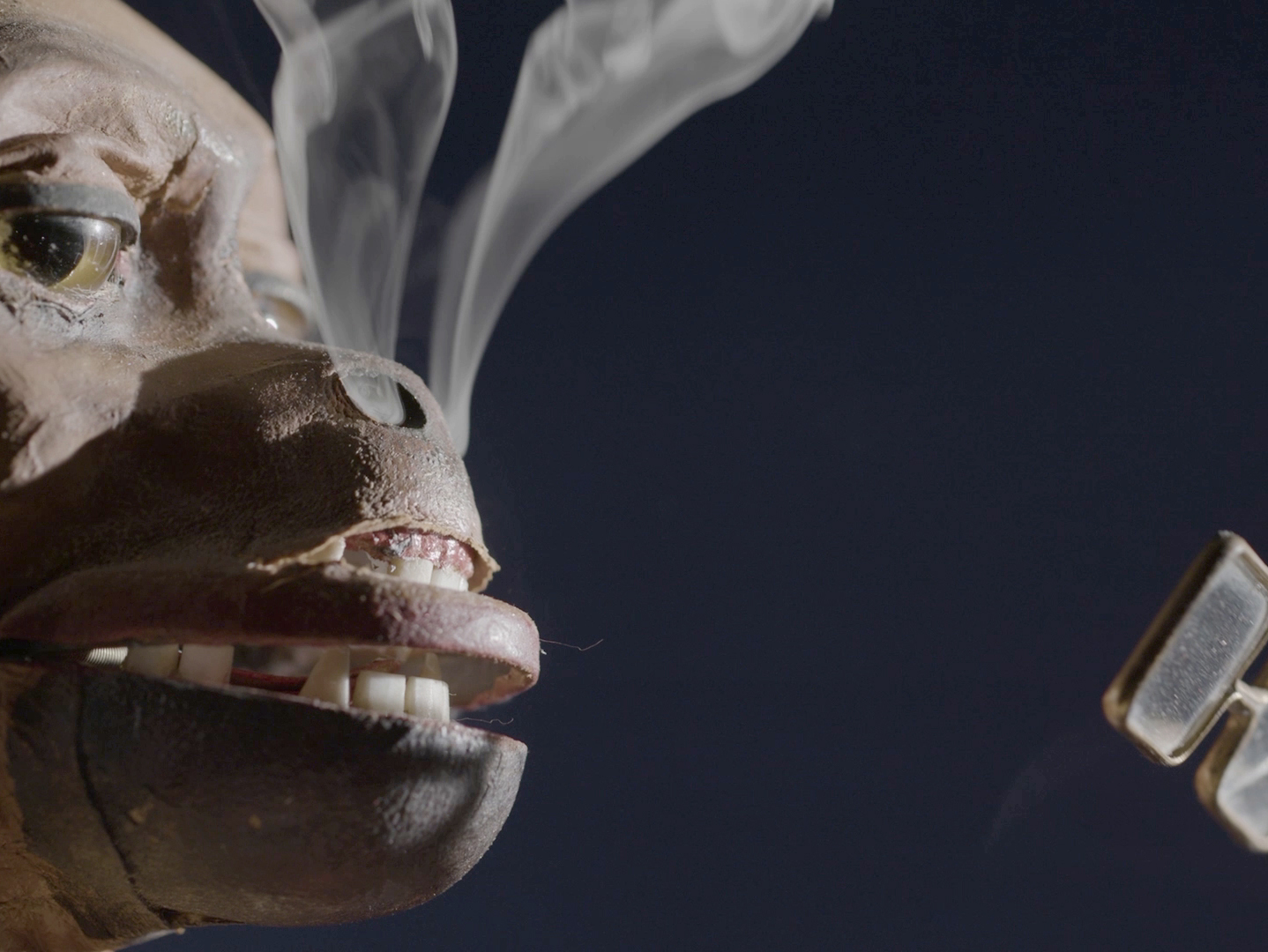
Dani Gal, Book of the Machines (2023), video still, courtesy of the artist
Up on the hills, a former modernist call center has been transformed into the exhibition Demon Radio, the domain of Dr. Jazz – also known as Dietrich Schulz-Kohn, a West German radio’s main jazz expert and declared Nazi. The pavilion itself contains some of Schulz-Kohn’s collection of Jazz records along with documents and photographs from his archive showing him in Nazi uniform, posing with Black Parisian Jazz musicians. The moral ambivalence of the figure is anchored in his paradoxical passion for the genre while continuing to adhere to the racist ideology of the Nazi government. Mixed messages continue through the sound, video and installation Rehearsing Azaad Hind Radio (2018) by Zuleikha Chaudhari, an imaginative recreation of an Indian Nationalist broadcaster’s WW2-era radio studio. Subhash Chandra Bose was a militant patriot who had employed extraordinary means in order to move around the planet, finding support from Adolf Hitler and Japanese Allies. His elaborate disguises included various fictitious nationals: including an Italian named Orlando Mazotta, and an Afghan businessman named Mohammed Khan and others. His particular ideology hinged on manipulative misinterpretations and bending of the law that sought to align militant nationalism with decolonization in a manner that still echoes through contemporary Indian politics. Simultaneously the project evokes ancient intersections between law and theater in the form of a staged trial.
Two films bridge between Bose and Dr. Jazz, both by artist Dani Gal: Dark Continent (2023), a mini feature that reenacts a psychiatrist’s case study as told by decolonial author Franz Fanon in his book Black Skin, White Mask (1952). In it, a young woman is experiencing psychotic tics triggered by her memories of listening to the sounds of African drums in the evenings with her father. These drums were prohibited by colonial regimes as a tool of uprising, used to communicate secret messages. The film ends with a quote from Freud, uttered in 1926, which compares the female psyche to the ‘dark continent’. Speaking to the ways in which fears of justice and thirst for power drives ideals of law and justice, the film depicts a young patient that sees herself as the victim in a situation in which she is undeniably privileged, evoking the colonizer’s fear of the oppressed. Gal’s Book of the machines (2023) takes it a step further: inquiring footage of primitive, mechanical proto-robots and antique racialised dolls are interspersed with excerpts by Samuel Butler’s novel Erewhon (1972) in which humans destroy all machines in fear that they will take over the world, at once consolidating questions of distinction between good and evil, ambition and survival, justice and freedom, as a matter of perspective. Revisiting Bose’s interpretation of the law, a pacifist’s preference of peace to freedom, Freud’s lament, and Dr Jazz’s paradoxical passions, the exhibition makes one thing clear: that the road to hell is paved with good intentions.
Humans and Demons, this year’s edition of steirischer herbst, is on view until October 15
[1] From Levi’s 1976 ‘Preface to Presser’s The Night of the Girondins’ and the festival’s curatorial statement
Xenia Benivolski
is curator hedendaagse kunst, geluid en muziek, kunstcriticus en schrijver